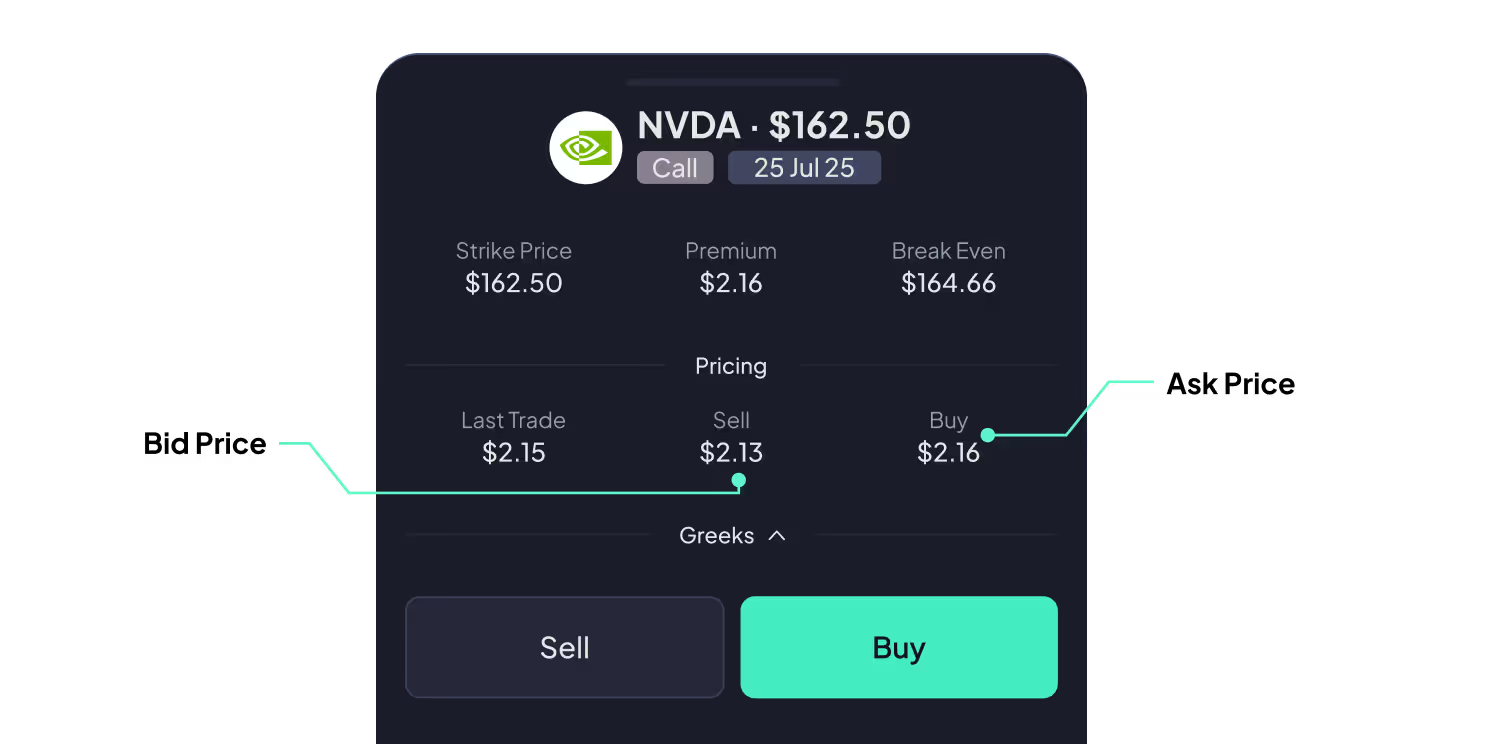Ask Price

The ask price (also known as the offer price) is the minimum price a seller is willing to accept when selling a security, such as a share or bond. It’s part of the bid-ask spread, which represents the difference between the highest price a buyer is willing to pay (the bid) and the lowest price a seller is asking for.
The ask price is set by the market and can change throughout the day, depending on supply and demand, trading activity, and market sentiment. When an investor chooses to buy a security, they will usually pay the current ask price (or close to it), depending on the type of order used.
Ask prices are shown in real time (or with a short delay) on trading platforms.
Why the ask price matters to investors
Understanding the ask price helps investors:
● Understand the actual cost of entering a position
● Gauge market liquidity, particularly when considered alongside the bid price
● Interpret trading spreads, especially in fast-moving or less liquid markets
The bid-ask spread (the difference between the two prices) can also signal how actively a security is traded. Tighter spread soften suggest higher liquidity, while wider spreads may indicate lower liquidity or higher risk.

